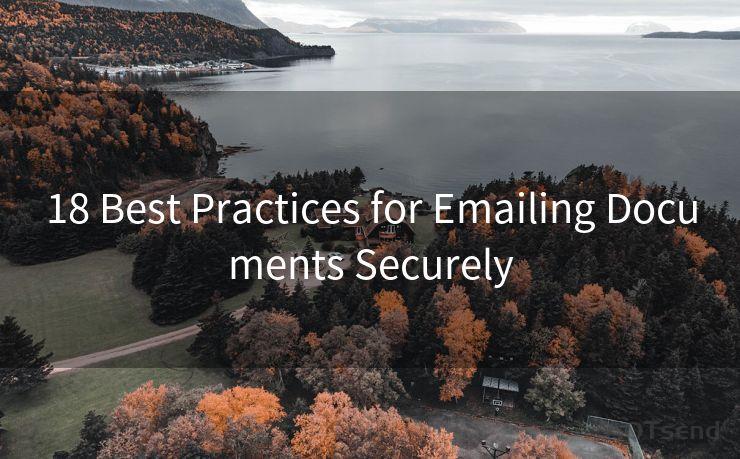18 Best Practices for Emailing Documents Securely




In today's digital age, emailing documents is a common practice. However, with the increasing threat of cyber attacks and data breaches, it's crucial to ensure the security of these transmissions. Here are 18 best practices for emailing documents securely.
1. Use Encrypted Email Services
When sending sensitive documents, opt for email services that offer end-to-end encryption. This ensures that only the sender and receiver can read the message content and attachments.
2. Avoid Public WiFi for Sensitive Emails
Public WiFi networks are often unsecured and can be prone to eavesdropping. Avoid sending sensitive documents over such networks.
3. Utilize Secure File Sharing Services
Consider using secure file sharing platforms instead of emailing large or sensitive files. These services often provide stronger encryption and access controls.
4. Double-Check Recipient Addresses
Always verify the email addresses of the recipients to avoid accidental leaks to unauthorized parties.
5. Use Strong Passwords
Protect your email account with a strong, unique password to reduce the risk of being hacked.
6. Enable Two-Factor Authentication
Adding an extra layer of security, two-factor authentication requires an additional verification step, making it harder for unauthorized access.

7. Be Cautious with Attachments
Before sending an attachment, ensure it doesn't contain any hidden metadata or sensitive information that could be exploited.
8. Use a VPN for Added Security
When sending sensitive emails, consider using a Virtual Private Network (VPN) to encrypt your internet traffic and hide your IP address.
9. Keep Your Software Updated
Regularly update your email client and operating system to ensure you have the latest security patches and bug fixes.
10. Avoid Using Auto-Complete Features
Email clients often have auto-complete features for email addresses. Be careful to avoid accidentally sending sensitive documents to the wrong person.
11. Consider Digital Rights Management
For highly sensitive documents, consider using Digital Rights Management (DRM) tools to control access and usage even after the document has been sent.
12. Use a Secure Email Gateway
Deploying a secure email gateway can help filter out malicious emails and protect sensitive outbound communications.
13. Educate Yourself on Phishing Scams
Be aware of phishing scams that might trick you into revealing sensitive information or downloading malware.
14. Limit Access to Sensitive Emails
Use email permissions and access controls to limit who can view, forward, or print sensitive emails.
15. Regularly Review Email Settings
Periodically check your email account settings to ensure no unauthorized changes have been made that could compromise security.
16. Backup Important Emails
🔔🔔🔔
【AOTsend Email API】:AOTsend is a Managed Email Service for sending transactional emails. Support Email Types: reminders, authentication, confirmations, notifications, verification codes, invoices, password resets, account activations, billing statements, two-factor authentication (2FA), and one-time passwords (OTP) emails, etc. $0.28 per 1000 Emails. 99% Delivery, 98% Inbox Rate.
You might be interested in:
Why did we start the AOTsend project, Brand Story?
What is a Managed Email API, How it Works?
Best 25+ Email Marketing Platforms (Authority,Keywords&Traffic Comparison)
Best 24+ Email Marketing Service (Price, Pros&Cons Comparison)
Email APIs vs SMTP: How they Works, Any Difference?
Regularly backup your important emails to a secure location in case of data loss or corruption.
17. Use a Dedicated Email for Sensitive Communications
Consider setting up a separate email account specifically for sending and receiving sensitive documents.
18. Know Your Provider's Privacy Policies
Familiarize yourself with your email provider's privacy policies to understand how they handle your data and communications.
By following these 18 best practices for emailing documents securely, you can significantly reduce the risks associated with sending sensitive information via email. Remember, security is everyone's responsibility, so stay vigilant and protect your data.




Scan the QR code to access on your mobile device.
Copyright notice: This article is published by AotSend. Reproduction requires attribution.
Article Link:https://www.mailwot.com/p411.html



